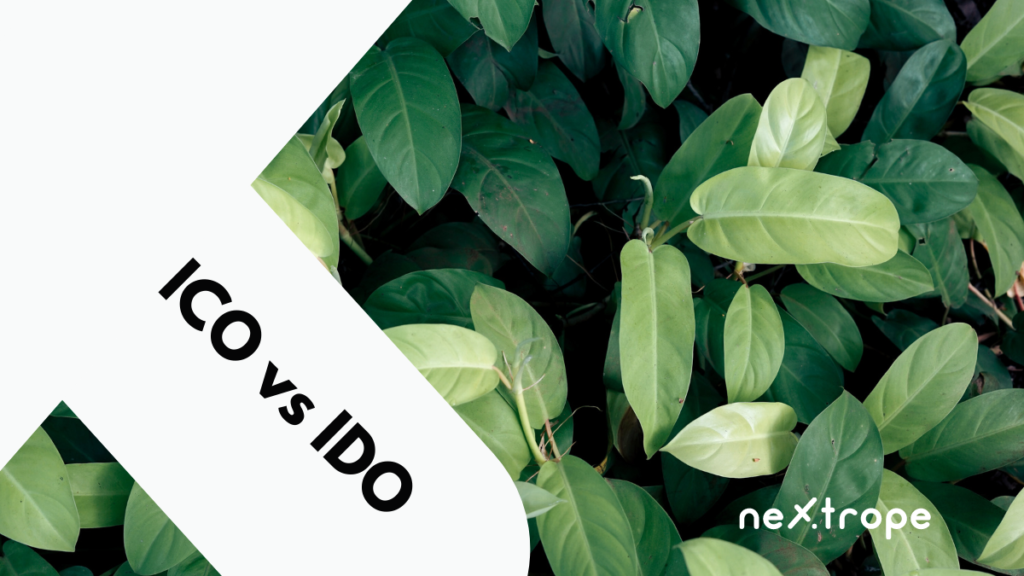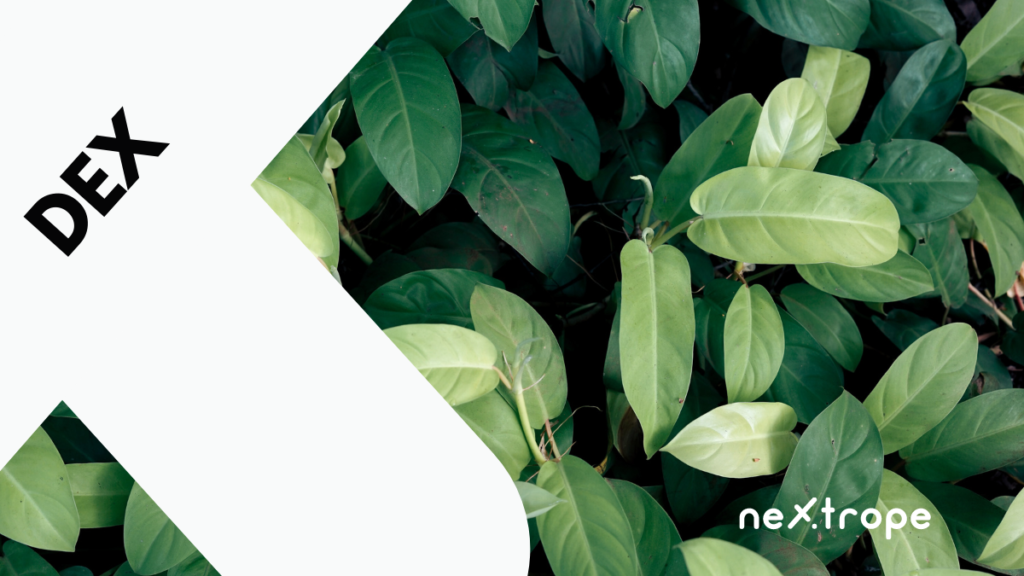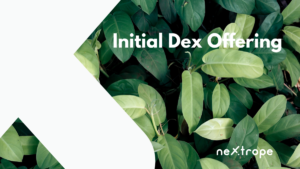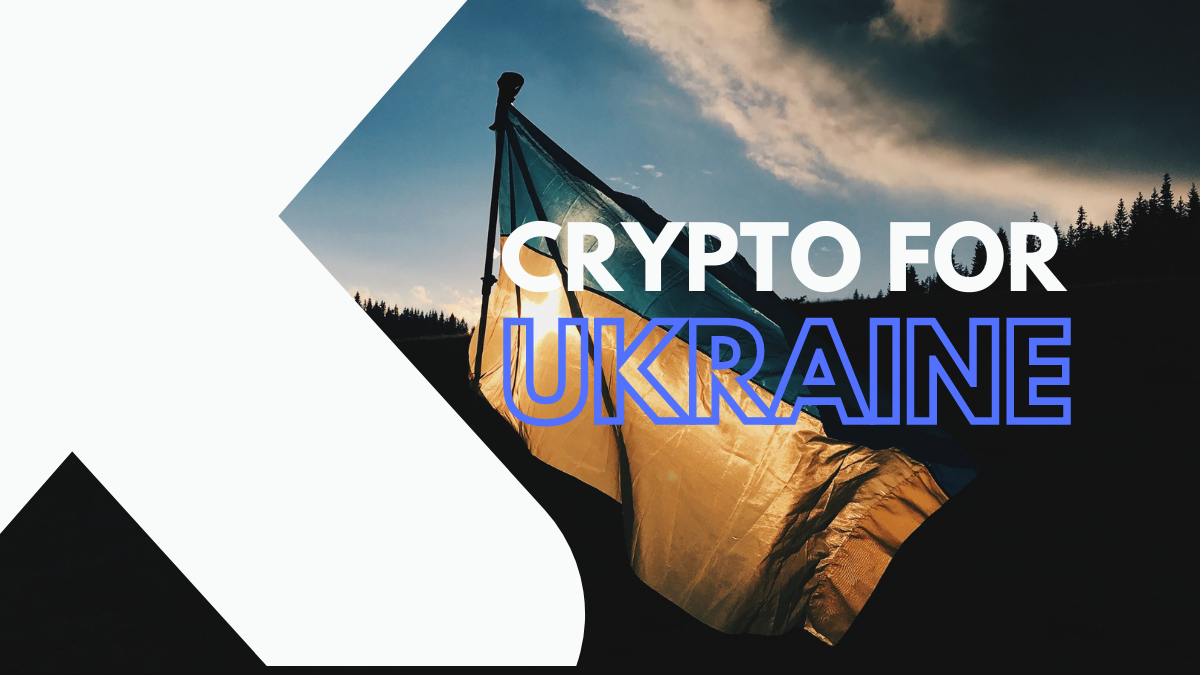The development of the cryptocurrency industry and IDO is progressing every year. Thanks to this, new ways of raising funds appear frequently. Initial Dex Offering is one such form. This is one of several ways to raise funds for crypto projects. It is worth noting that the first approach to raising funds for a project's token was the Initial Coin Offering (ICO), which in 2017 brought many advantages and negatives. At the same time, ICO has led to the fact that many investors have become millioners within a few days. How does ICO compare to IDO? Why can IDO be a more interesting concept for raising funds? We are writing about this in thie article below!
ICO and IDO
As we have written earlier, ICO is an unregulated approach to crowdsourcing funds from retail investors. In the crypto space, the main challenges of initial coin offering were related to lack of control and protection of investors' funds. Cryptocurrency projects access was based on complete trust. ICO creators were not due diligence tested. This has led to a time when almost every initial coin offering project could promise significant profits - but these promises have repeatedly proved to be empty.

Many ICO projects have simply proved to be a fraud. Decentralized finance (DeFi) can help with this, as they aim to address this problem through alternative fund-raising models. One such model is the decentralized Exchange (DEX) model. DEX offers cryptocurrency investors access to another, more egalitarian model of crowdfunding in the crypto market.
What is a DEX offer or IDO?
It is worth noting that the original concept of the initial offers of DEX has changed enormously over the years and in its current most popular form has little to do with what it planned to implement at the start of the initial IDO (Initial DEX Offering). In fact, the initial offer of DEX is the successor to initial coin offering and IEO, because its goal is to collect money and launch the project. However, unlike ICO and IEO, in which tokens are sold before being listed, in the case of initial dex offering, they are immediately listed on a decentralized exchanges. For this reason, the name DEX was created.

What is the Raven Protocol? The first ever Initial DEX Offerings took place in June 2019 – it was called the Raven Protocol. The protocol team selected the decentralized Binance DEX exchange. They place a new token at a specific price, and the traders could buy it until the hard cap has been reached on binance dex.
In theory, this particular way of fundraising had several powerful benefits, including:
- Quick Trading
- Immediate liquidity was achieved
- An open and transparent means pf collecting money has been achieved
However, investors were not satisfied. The reason was that these symbolic sales would be sold out in a few seconds, leaving a small opportunity for the average investor to participate in the project. As a result of the immediate selling of the entire offer, there was speculation that it was done by bots. This is how the first initial dex offering start platforms, which are gaining popularity today, were formed.
What is a starting offer for DEX and IEO (Initial Exchange Offerings)
The first offer of DEX (IDO) is a way to raise funds that receives investment capital from retail investors. IDO was created to address the shortcomings of the 'traditional' model of cryptocurrency community funding, the initial coin offering. Given that IDO works with DEX, unlike centralized exchange, DEX can be regarded as a decentralized liquidity exchange. Decentralized liquidity exchange and initial dex offering is the latest model for funding cryptocurrency projects that want to raise funds from investors. However, let us remember that DEX is less scalable than ICO and IEO, and many trading processes are based on DeFi platforms
Token Generation EVENT and decentralized exchange
Today, in its most popular iteration and form, the initial offers of DEX are particularly similar to Initial Exchange offerings (IEO) with some key differences.
- In the case of IEO, it was an echange which reviewed projects and conducted token sales. With initial dex offering, it is a third-party platform that checks the stock exchange, while token sales themselves take place in a slightly decentralized manner.
- In theory, anyone can raise funds through IDO (initial dex offerings) using a third-party start platform because everything he or she would have to do is open the pool.
- The way it works is quite simple. The project is sent to the starter, and if it meets the requirements, it is selected for the initial dex offering. The process itself may vary from one starter to another, but the concept is always the same.
- There is a pool from which users can buy an "IOU" of the token that the project wants to run. The IOU is a confirmation of the debt. In other words, investors pay for their tokens in advance, but receive them at the Token Generation Event (TGE), which usually takes place very shortly after the IDO itself (usually within a few hours).
- Once the IDO has been successfully concluded and TGE has started, the token is immediately traded on a decentralized exchange. In most cases, this is the case with Uniswap because the vast number of projects is still built on Ethereum and their tokens are based on the ERC20 protocol standard.
However, other blockchains are also gaining popularity, including Solana, Polkadot and Binance Smart Chain (BSC). Therefore, some projects prefer to run their tokens on them to avoid high network charges in Ethereum. In this case, the token would be listed on a native stock exchange, such as the BSC’s PancakeSwap.
How do IDO cryptocurrencies work?
IDO (initial dex offering) works because DEX can provide instant liquidity for tokens based on smart contracts. That is why DEX tends to reward liquidity pool providers with attractive rewards. Liquidity pools allow DEX to operate without unexpected problems for their users. In order to help trade, most projects provide liquidity to DEX by allocating a part of the funds. This approach has become standard practice. Many projects are also supported by the “Proof of Stake (POS) mechanism. The POS consensus is designed to keep the network secure. But in this case, the mechanism mainly serves to discourage investors from selling tokens too fast. This ensures that investors hold their token capital in their portfolio. In return, they earn rewards for their "participation" in the network. Then, when the project is launched, investors can immediately start trading the token. Investors who have purchased tokens faster can sell them at a higher price when initial dex offerings begins to operate. When the public sale starts, the token value increases.
Fees and smart contracts
In the event of an ecchange, the fees for the performance of the new smart contract are negligible, as the trading pairs provide a high degree of liquidity. Smart contracts help manage the asset token and the liquidity pool. It should be stressed that unlike traditional fund-raising models, IDO can immediately create tokens. In addition, any meaningful IDO project can be qualified to raise funds from retail investors. The same can be said about avoiding the high costs of Initial Exchange Offerings (IEO). Investors do not have to wait long for the desired tokens to appear on the stock exchange. The list usually appears immediately after the initial dex offerings is complete. This time allows investors to make money on their investments much quicker compared to initial coin offering .
Pros and cons of IDO
Like any funding method, IDO has its advantages and disadvantages for project's token, which we have decided to present below:
Pros of IDO
- Availability - IDO has no procedures that can be associated with IEO. As a result, many people can raise capital without unnecessary bureaucracy.
- Speed - investors are quickly informed of the arrival of tokens on the stock exchanges and start trading because they have immediate access to trade. The listing occurs almost immediately after the IDO has ended. Its good for token projects.
- Immediate liquidity - in connection with the promotion of PoS, significant capital is leftavailable on the stock exchange, thus improving its liquidity.
- Transparency - anyone can review token contracts and projects beforehand.
Cons of IDO
- Verification - the low level of verification leads to many rogue creators who attempt to defraud funds.
- Competition - it is extremely difficult to participate in IDO because of a huge number of competitors who wish to purchase tokens.
- Token sharing - most tokens in IDO generally reach the team and private investors first, and afterwards to the rest of the entities.
- However, IDO still seems to be an attractive form of investment, with little bureaucracy and tempting, significant profits.
Crypto projects offered by IDO are lightning-fast. The initial waiting period for selling tokens at the exchange is short, which allows many people to profit quickly. Unfortunately, these offers are often attractive and, as a result, an average crypto trader may not be able to make the purchase in time, as you will see if do your own research into the matter. Moreover, IDO are not usually present on centralized exchanges, which means that they are also directed towards a smaller group of people. However, IDO is attractive due to the lack of bureaucracy, quick access to funds and the immediate provision of liquidity to the platform.
 en
en  pl
pl 











